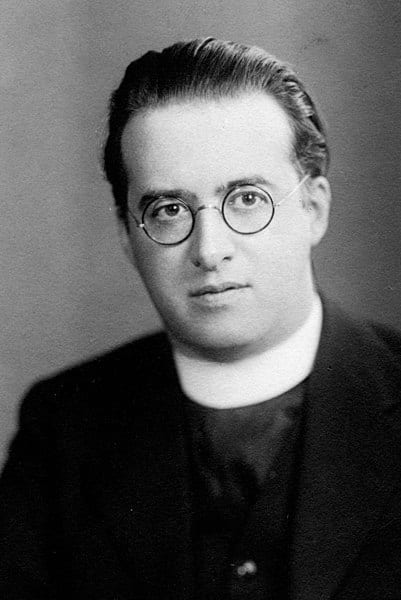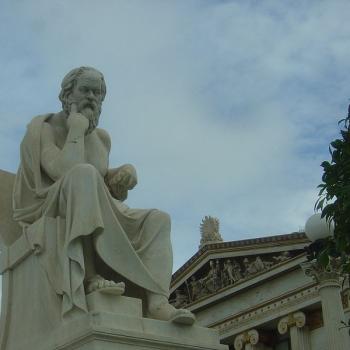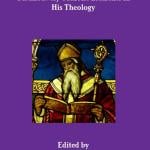
I continue my critiques of Why I Became an Atheist, by John W. Loftus.
I first ran across former Christian minister Loftus back in 2006. We dialogued about the problem of evil, and whether God was in time. During that period I also replied to an online version of his deconversion: which (like my arguments about God and time) he didn’t care for at all. I’ve critiqued many atheist deconversion stories, and maintain a very extensive web page about atheism. In 2007 I critiqued his “Outsider Test of Faith” series: to which he gave no response. Loftus’ biggest objection to my critique of his descent into atheism was that I responded to what he called a “brief testimony.” He wrote in December 2006 (his words in blue henceforth):
Deconversion stories are piecemeal. They cannot give a full explanation for why someone left the faith. They only give hints at why they left the faith. It requires writing a whole book about why someone left the faith to understand why they did, and few people do that. I did. If you truly want to critique my deconversion story then critique my book. . . . I challenge you to really critique the one deconversion story that has been published in a book. . . . Do you accept my challenge?
I declined at that time, mainly (but not solely) for the following stated reason:
If you send me your book in an e-file for free, I’d be more than happy to critique it. I won’t buy it, and I refuse to type long portions of it when it is possible to cut-and-paste. That is an important factor since my methodology is Socratic and point-by-point. . . . You railed against that, saying that it was a “handout.” I responded that you could have any of my (14 completed) books in e-book form for free.
Throughout August 2019, I critiqued Dr. David Madison, a prominent contributor to Loftus’ website, Debunking Christianity, no less than 35 times. As of this writing, they remain completely unanswered. I was simply providing (as a courtesy) links to my critiques underneath each article of Dr. Madison’s, till Loftus decided I couldn’t do that (after having claimed that I “hate” atheists and indeed, everyone I disagree with). I replied at length regarding his censorship on his website. Loftus’ explanation for the complete non-reply to my 35 critiques was this: “We know we can respond. It’s just that we don’t have the time to do so. Plus, it’s pretty clear our time would be better spent doing something else than wrestling in the mud with you.” Meanwhile, I discovered that Dr. Madison wrote glowingly about Loftus on 1-23-17:
When the history of Christianity’s demise is written (it will fade eventually away, as do all religions), your name will feature prominently as one who helped bring the world to its senses. Your legacy is secure and is much appreciated.
This was underneath an article where Loftus claimed: “I’ve kicked this dead rodent of the Christian faith into a lifeless blob so many times there is nothing left of it.” I hadn’t realized that Loftus had single-handedly managed to accomplish the stupendous feat of vanquishing the Hideous Beast of Christianity (something the Roman Empire, Muslims, Communists, and many others all miserably failed to do). Loftus waxed humbly and modestly ten days later: “I cannot resist the supposition that my books are among the best. . . . Every one of my books is unique, doing what few other atheist books have done, if any of them.”
These last three cited statements put me “over the edge” and I decided to buy a used copy of his book, Why I Became an Atheist (revised version, 2012, 536 pages) and critique it, as he wanted me to do in 2006. Moreover, on 8-27-07 he made a blanket challenge about the original version of this book: “I challenge someone to try this with my book. I might learn a few things, and that’s always a goal of mine. Pick it up and deal with as many arguments in it that you can. Deal with them all if you can.” His wish is granted (I think he will at length regret it), and this will be my primary project (as a professional apologist) in the coming weeks.
Despite all his confident bluster, I fully expect him to ignore my critiques: just like Madison and “Bible Basher” Bob Seidensticker, who also has ignored 35 of my critiques (that he requested I do). If Loftus decides to defend his views, I’m here; always have been. And I won’t flee for the hills, like atheists habitually do, when faced with substantive criticism.
The words of John Loftus will be in blue.
*****
John Loftus’ chapter 6 is entitled, “The Lessons of Galileo, Science, and Religion” (pp. 127-145).
The amount of error in the usual atheist analysis of “science and Christianity” is so vast, and the misrepresentations and often deliberate, glaring historical omissions so innumerable, that I could literally write for a week about them. But I have neither the time nor the energy, so I will have to make a relatively limited reply. For a much different view: a thinking Christian approach to science, see my extensive web page on science and philosophy, and my book, Science and Christianity: Close Partners or Mortal Enemies? (available for only $3.99 as an e-book).
Neil DeGrasse Tyson . . . [said] “I have yet to see a successful prediction about the physical world that was inferred or extrapolated from the content of any religious document. . . . Whenever people have used religious documents to make detailed predictions about the physical world they have been famously wrong.” (p. 132)
Atheist Bob Seidensticker, in one of his countless trashings of Christianity, taunted:
10. Germs? What germs?
The Bible isn’t a reliable source of health information. . . . physical health and basic hygienic precautions are not obvious and are worth a mention somewhere. How about telling us that boiling water minimizes disease? Or how to site latrines to safeguard the water supply?
Five minutes searching on Google would have prevented Bob from spewing more ignorance about the Bible. The Bible Ask site has an article, “Did the Bible teach the germs theory?” (5-30-16):
The Bible writers did not write a medical textbook. However, there are numerous rules for sanitation, quarantine, and other medical procedures (found in the first 5 book of the OT) . . .
Ignaz Philipp Semmelweis (1818 –1865), who was a Hungarian physician, . . . [He] proposed the practice of washing hands with chlorinated lime solutions in 1847 . . . He published a book of his findings in Etiology, Concept and Prophylaxis of Childbed Fever. Despite various publications of his successful results, Semmelweis’s suggestions were not accepted by the medical community of his time.
Why was Semmelweis research rejected? Because germs were virtually a foreign concept for the Europeans in the middle-19th-century. . . .
Had the medical community paid attention to God’s instructions that were given 3000 years before, many lives would have been saved. The Lord gave the Israelites hygienic principles against the contamination of germs and taught the necessity to quarantine the sick (Numbers 19:11-12). And the book of Leviticus lists a host of diseases and ways where a person would come in contact with germs (Leviticus 13:46).
Germs were no new discovery in 1847. And for this fact, Roderick McGrew testified in the Encyclopedia of Medical History: “The idea of contagion was foreign to the classic medical tradition and found no place in the voluminous Hippocratic writings. The Old Testament, however, is a rich source for contagionist sentiment, especially in regard to leprosy and venereal disease” (1985, pp. 77-78).
Some other interesting facts regarding the Bible and germ theory:
1. The Bible contained instructions for the Israelites to wash their bodies and clothes in running water if they had a discharge, came in contact with someone else’s discharge, or had touched a dead body. They were also instructed about objects that had come into contact with dead things, and about purifying items with an unknown history with either fire or running water. They were also taught to bury human waste outside the camp, and to burn animal waste (Num 19:3-22; Lev. 11:1-47; 15:1-33; Deut 23:12).
2. Leviticus 13 and 14 mention leprosy on walls and on garments. Leprosy is a bacterial disease, and can survive for three weeks or longer apart from the human body. Thus, God commanded that the garments of leprosy victims should be burned (Lev 13:52).
3. It was not until 1873 that leprosy was shown to be an infectious disease rather than hereditary. Of course, the laws of Moses already were aware of that (Lev 13, 14, 22; Num 19:20). It contains instructions about quarantine and about quarantined persons needing to thoroughly shave and wash. Priests who cared for them also were instructed to change their clothes and wash thoroughly. The Israelites were the only culture to practice quarantine until the 19th century, when medical advances discovered the biblical medical principles and practices.
4. Hippocrates, the “father of medicine” (born 460 BC), thought “bad air” from swampy areas was the cause of disease.
See also: “Old Testament Laws About Infectious Diseases.”
Let me close with a paraphrase of an idea from AronRa: When the answer is known, science knows it. But when science doesn’t know it, neither does religion.
That’s not true. As shown, Hippocrates, the pagan Greek “father of medicine” didn’t understand the causes of contagious disease. Nor did medical science until the 19th century. But the hygienic principles that would have prevented the spread of such diseases were in the Bible: in the Laws of Moses.
[R]eligious beliefs are always the ones that have been forced to integrate with science, and not the other way around, so why not just admit science sets the boundaries for what we believe? (p. 134)
I just showed numerous examples regarding germ theory, disease, and medicine, that already put the lie to this broad claim. Another example that readily comes to mind would be Big Bang cosmology. The consensus among scientists before that came around was the steady state theory of cosmology (an eternal universe). Even Einstein accepted that. Then a Belgian Catholic priest by the name of Fr. Georges Lemaître (1894-1966), who was also a mathematician, astronomer, and professor of physics at the Catholic University of Louvain, developed the Big Bang Theory. The Wikipedia article on him states:
He was the first to identify that the recession of nearby galaxies can be explained by a theory of an expanding universe, which was observationally confirmed soon afterwards by Edwin Hubble. He was the first to derive what is now known as Hubble’s law, or the Hubble–Lemaître law, and made the first estimation of what is now called the Hubble constant, which he published in 1927, two years before Hubble’s article. Lemaître also proposed what later became known as the “Big Bang theory” of the origin of the universe, initially calling it the “hypothesis of the primeval atom“. . . .
At this time [1931], Einstein, while not taking exception to the mathematics of Lemaître’s theory, refused to accept that the universe was expanding; Lemaître recalled his commenting “Vos calculs sont corrects, mais votre physique est abominable“ (“Your calculations are correct, but your physics is atrocious”). . . .
After Hubble’s discovery was published, Einstein quickly and publicly endorsed Lemaître’s theory, helping both the theory and its proposer get fast recognition.
That is all scientific work, so how does it tie into the Bible (which — we agree — is not and was not intended to be a “science book”)? Well, the Bible taught ex nihilo creation:
Genesis 1:1 (RSV) In the beginning God created the heavens and the earth.
Thus, in this instance, science had to adjust to a long-held tenet of Christianity, rather than vice versa, and what John Loftus claimed above (falling into the trap of asserting a universal negative again) is a falsehood. The agnostic astronomer Robert Jastrow (1925-2008) observed about this:
For the scientist who has lived by his faith in the power of reason, the story ends like a bad dream. He has scaled the mountains of ignorance, he is about to conquer the highest peak; as he pulls himself over the final rock, he is greeted by a band of theologians who have been sitting there for centuries. (God and the Astronomers, 1978)
Now we see how the astronomical evidence supports the Biblical view of the origin of the world. The details differ, but the essential elements in the astronomical and Biblical accounts of Genesis are the same: the chain of events leading to man commenced suddenly and sharply at a definite moment in time, in a flash of light and energy. (The Enchanted Loom, 1981)
As Richard Carrier says, “Theologians have been wrong every time so far. Why keep betting on them?” I just don’t see why we should. (p. 135).
Really? I’ve already provided several contrary examples. Loftus and Carrier need to get up to speed and to stop saying dumb things. Here’s another example that runs counter to their bigoted proclamations. Aristotle thought that time extended to an infinite past and into an infinite future. But Christian theologian St. Augustine (354-430), according to the Stanford University web page, “Spacetime Before Einstein”:
. . . put a theological twist on Lucretius’ argument for the relational nature of time in his Confessions, emphasizing that “God created the world with time, not in time”. Time came into existence along with matter, in other words — a viewpoint that interestingly foreshadows the one held by big-bang cosmologists today.
Eric Rosenfield, in his article, “An Analysis of the Concept of Time in the Confessions, Book 11 by Augustine of Hippo” elaborates:
In 1917, Albert Einstein completed work on the General Theory of Relativity, one of the rules of which states that time is fundamentally bound to matter and gravity, and that without matter there would be no time. Oddly, this concept was presaged almost 1,300 years before that when Bishop Augustine of Hippo (later St. Augustine) put forth the idea that when God created the Heavens and the Earth, he created time itself as well. Before Augustine, no one that we know of had tried to consider “time” as being something changeable, something that could start and stop; after all, we always perceive time as moving forward, and contemplating temporality as being finite or malleable seems unnatural, and the implications headache-rousing. Plato and Aristotle both regarded time as being infinite. Yet it was Augustine’s application of the methods of the principles of Grecian philosophy and reason to the Christian concept of God that forced him to arrive at his conclusions. . . .
[W]hat’s really strange about Augustine’s interpretation of the eternal nature of the Beginning is that, when taken entirely apart from the Bible, it resonates not only with Relativity (Augustine saying that for the Word to happen in time there must have been something that experiences time being roughly analogous to Einstein saying that matter and time are linked, and without one you would not have the other) but also with modern Big Bang Theory. Briefly, according to Big Bang Theory, because matter and time are so inextricably bound, when all the matter in the universe was compressed into a single point it formed what’s called a “quantum singularity” in which, the math shows, the curvature of time and space became infinite. This means the Big Bang singularity exists at all times at once, in all places at once much like Augustine’s God – the singularity that created the universe is all around us, all the time, forever.
Isaac Newton was still getting it wrong some 1300 years later, according to Internet Encyclopedia of Philosophy (“Time”):
In about 1700, Isaac Newton claimed future time is infinite and that, although God created the material world some finite time ago, there was an infinite period of past time before that.
But Loftus cites Richard Carrier’s whoppers again (one of many dumb things Carrier has uttered, that he chose to include in his book):
“Christianity was bad for science, it put a stop to scientific progress for a thousand years, and even after that it made science’s recovery difficult, painful, and slow.” (p. 141)
Right. He must live in an alternate universe. I have documented “33 Empiricist Christian Thinkers Before 1000 AD”. As one example among many, both Augustine and Aquinas opposed astrology. On the other hand, many great early scientists (also Christians) were obsessed with astrology, including Galileo, Kepler, and Tycho Brahe, while Isaac Newton (an Arian) was fascinated with alchemy.
*
The so-called “Enlightenment” (the supposedly “reasonable” people), by contrast, murdered Lavoisier, the father of chemistry, and several other prominent French scientists and philosophers (namely, Philippe-Frédéric de Dietrich, Nicolas de Condorcet, Jean Baptiste Gaspard Bochart de Saron, Guillaume-Chrétien de Lamoignon de Malesherbes, and Félix Vicq d’Azyr). The murderous spree against scientists was later revived by the Soviet and Chinese atheist Communists.
Galileo, on the other hand (the only example of a “scientific martyr” that we ever seem to hear about) lived his life under house arrest in luxurious palaces of his supporters. Galileo and other scientists of his general time, got many things wrong, too (just as some in the Church had, in condemning Galileo’s premature overconfidence).
The Catholic Church produced modern science, including heliocentrism (formulated by the Catholic Copernicus). One (sub-infallible) Catholic tribunal at one point of our history, got science wrong (while a pious Catholic who was wrongly persecuted: Galileo, got some major things right, but also other things wrong, and another Catholic, St. Robert Bellarmine, had the more modern, accurate understanding of scientific method).
As for heliocentrism, it need not be pointed out that Nicolaus Copernicus was the key figure who changed that, and he was a Catholic cleric, and his work was enthusiastically supported by the pope of the time and the Church (though later with Galileo there were some silly things said). Even a cursory glance at Wikipedia (“Heliocentrism”) reveals that Catholics were forerunners of heliocentrism:
European scholarship in the later medieval period actively received astronomical models developed in the Islamic world and by the 13th century was well aware of the problems of the Ptolemaic model. In the 14th century, bishop Nicole Oresme [c. 1320-1382] discussed the possibility that the Earth rotated on its axis, while Cardinal Nicholas of Cusa [1401-1464] in his Learned Ignorance asked whether there was any reason to assert that the Sun (or any other point) was the center of the universe. In parallel to a mystical definition of God, Cusa wrote that “Thus the fabric of the world (machina mundi) will quasi have its center everywhere and circumference nowhere.” . . .
The state of knowledge on planetary theory received by Copernicus [1473-1543] is summarized in Georg von Peuerbach‘s Theoricae Novae Planetaru (printed in 1472 by Regiomontanus [1436-1476] ). By 1470, the accuracy of observations by the Vienna school of astronomy, of which Peuerbach and Regiomontanus were members, was high enough to make the eventual development of heliocentrism inevitable, and indeed it is possible that Regiomontanus did arrive at an explicit theory of heliocentrism before his death in 1476, some 30 years before Copernicus. . . .
The entry on “Health” in Baker’s Evangelical Dictionary of Biblical Theology reveals that ordinary medicinal remedies were widely practiced in Bible times. There wasn’t solely a belief that sin or demons caused all disease (as Bob Seidensticker often implies in his anti-Christian writings, and in this paper: “According to the Bible, evil spirits cause disease.”). There was also a natural cause-and-effect understanding:
Ordinary means of healing were of most diverse kinds. Balm ( Gen 37:25 ) is thought to have been an aromatic resin (or juice) with healing properties; oil was the universal emollient ( Isa 1:6 ), and was sometimes used for wounds with cleansing wine ( Luke 10:34 ). Isaiah recommended a fig poultice for a boil ( 38:21 ); healing springs and saliva were thought effectual ( Mark 8:23 ; John 5 ; 9:6-7 ). Medicine is mentioned ( Prov 17:22 ) and defended as “sensible” ( Sirach 38:4). Wine mixed with myrrh was considered sedative ( Mark 15:23 ); mint, dill, and cummin assisted digestion ( Matt 23:23 ); other herbs were recommended for particular disorders. Most food rules had both ritual and dietary purposes, while raisins, pomegranates, milk, and honey were believed to assist restoration. . . . [St. Paul: “use a little wine for the sake of your stomach and your frequent ailments”: 1 Timothy 5:23]
Luke’s constant care of Paul reminds us that nonmiraculous means of healing were not neglected in that apostolic circle. Wine is recommended for Timothy’s weak stomach [St. Paul: “use a little wine for the sake of your stomach and your frequent ailments”: 1 Timothy 5:23], eye-salve for the Thyatiran church’s blindness (metaphorical, but significant).
Doctors today often note how the patient’s disposition and attitude has a strong effect on his health or recovery. The mind definitely influences the body. Solomon understood this in several of his Proverbs: written around 950 BC (Prov 14:30; 15:30; 16:24; 17:22).
Rest assured that science is not infallible, either, and has taught atrocious things (even in the 20th century) like Piltdown Man and Nebraska Man as authentic hominid fossils (one was a hoax and the other was an ancient pig’s tooth), eugenics, and phrenology.
Albert Einstein (a sort of pantheist or panentheist) cared very little for the materialist / atheist scientific mindset:
My religiosity consists of a humble admiration of the infinitely superior spirit that reveals itself in the little that we can comprehend about the knowable world. That deeply emotional conviction of the presence of a superior reasoning power, which is revealed in the incomprehensible universe, forms my idea of God. (To a banker in Colorado, 1927. Cited in the New York Times obituary, April 19, 1955)
Everyone who is seriously involved in the pursuit of science becomes convinced that a spirit is manifest in the laws of the universe — a spirit vastly superior to that of man . . . In this way the pursuit of science leads to a religious feeling of a special sort . . . (To student Phyllis Right, who asked if scientists pray; January 24, 1936)
In view of such harmony in the cosmos which I, with my limited human mind, am able to recognize, there are yet people who say there is no God. (to German anti-Nazi diplomat and author Hubertus zu Lowenstein around 1941)
Then there are the fanatical atheists . . . They are creatures who can’t hear the music of the spheres. (August 7, 1941)
In view of such harmony in the cosmos which I, with my limited human mind, am able to recognize, there are yet people who say there is no God. But what makes me really angry is that they quote me for support of such views. (c. 1941)
***
Photo credit: Fr. Georges Lemaître: father of Big Bang cosmology, around the mid 1930s [public domain / Wikimedia Commons]
***












